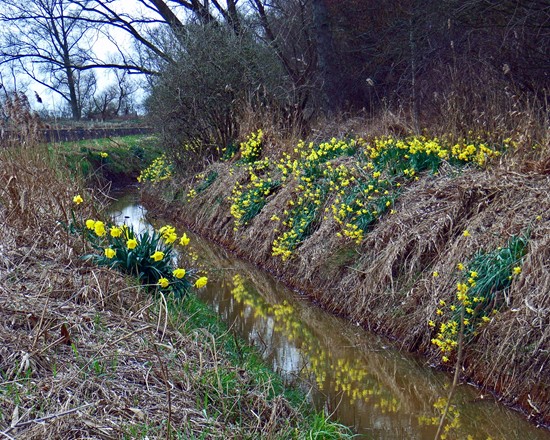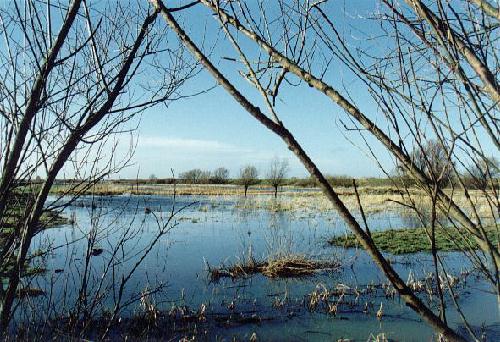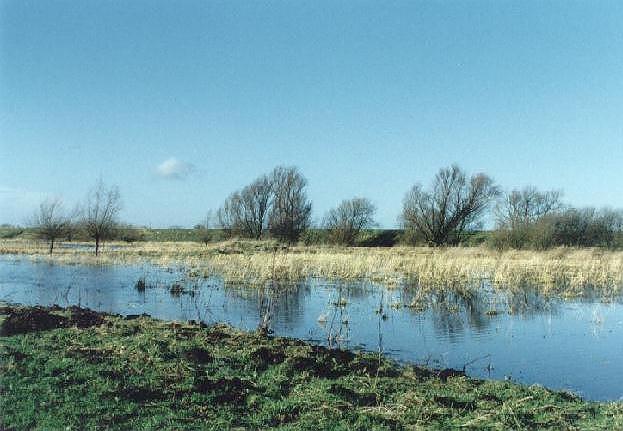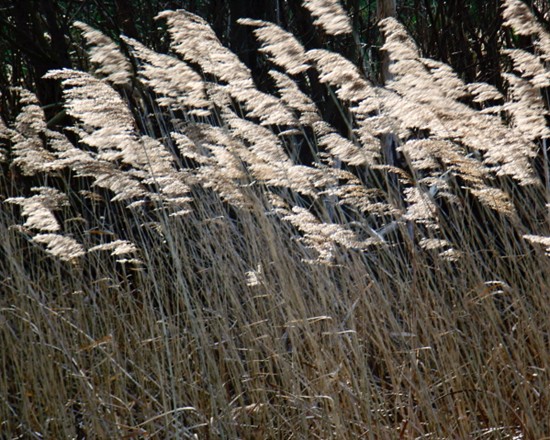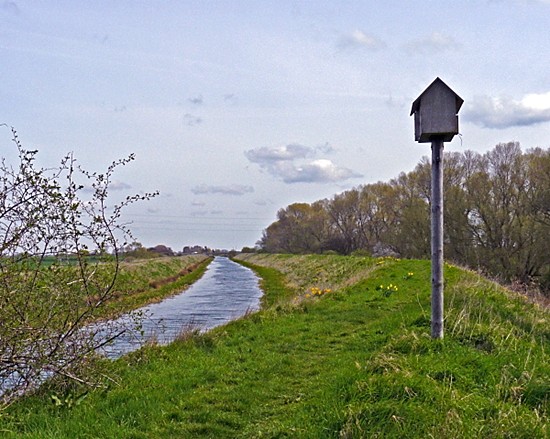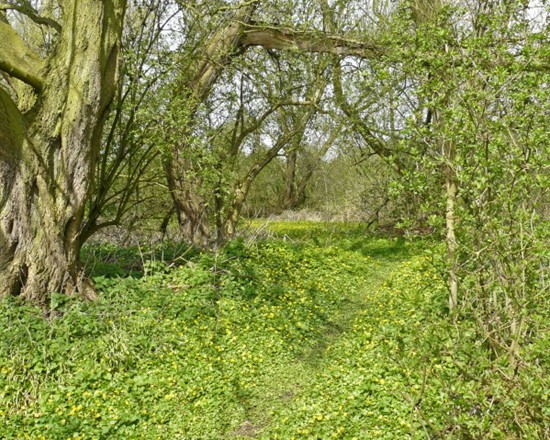|
Baston Fen Nature Reserve
The fens have the richest soil in England and so most of the land is under the plough but there are isolated spots that have been saved as havens for wildlife such as the nature reserve at Baston Fen, a protected area in South Lincolnshire which covers 90 acres of washlands to the south of Bourne and is administered by the Lincolnshire
Wildlife Trust. My pictures were taken during a visit in January 2001. Near the entrance is a marshy area or carr of willow which provides a range of nesting sites for birds. The carr once contained a hamlet of eight cottages and a windmill but now its willows, osiers and alders provide additional shelter and nesting sites for species such as tits, finches and warblers. The edges of the meres have been colonised by typical fen plants such as purple loosestrife, water plantain and marsh marigold. The borrow pits in the second and third washes contain such localised plants as greater bladderwort, water violet, lesser water plantain, greater spearwort and several species of stoneworts. Marsh orchids are found at the western end of the reserve. In total over 300 species of plants have been recorded. Birds are numerous and varied at most times of the year and over 160 species have been
noted. Of interest in the breeding season are shoveler, tufted duck, snipe, sedge warbler and, occasionally, garganey. In winter flocks of up to 1000 wildfowl, including teal, widgeon and mallard, and occasional Bewick swans, pintail and goosander, can be seen, together with parties of snipe and redshank as the flood waters recede in March. In summer there are various damselflies and a good variety of dragonflies, including hairy, migrant hawker, ruddy darter and four spotted chaser. The reserve is also rich in other invertebrates and over 70 species of non-marine molluscs have been recorded.
Until recent years, thirty acres of the reserve had another use in winter when the area was specially flooded in anticipation of severe overnight frosts that would create the ideal venue for ice skating by a dedicated band of enthusiasts who were only able to pursue their sport when the weather was cold enough. Unfortunately, this age old winter pursuit ended at Baston Fen in 1993 when the Lincolnshire Skating Association which organised it were forced to abandon the periodic events because of crippling insurance charges. Pleasure skating continued for a few more years but the owners of the land, the Lincolnshire Wildlife Trust, faced similar difficulties with their insurers over public liability and so skating for fun also ended in 2003 although there are still some who take to the ice when the weather conditions are right but they do so at their own risk.
See also Nature conservation Fenland ice skating REVISED MAY 2011
Go to: Main Index Villages Index |
